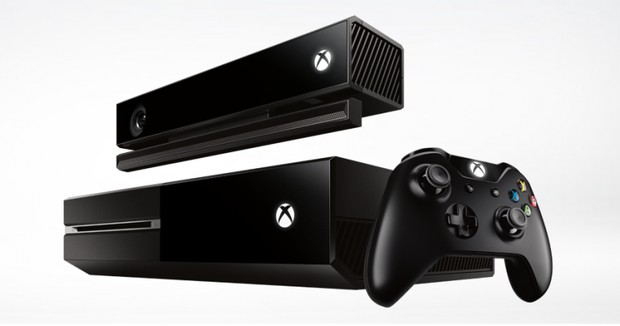The first thing that strikes you about the Xbox One is the simplicity of the tiles, these colored boxes that are everywhere and comprise everything. But that is a logical progression of the company’s design language. Then you notice the simplified layout, the three screens of Home, Pins, and Store. It all makes sense and all feels like inevitable improvement, which is what one might expect from a shiny new piece of technology. But it’s not until you say, “Xbox watch CNN,” then “Xbox snap Skype,” does the reality of Microsoft’s strategy hit you. With this new hardware enabled by the voice controls of the improved Kinect and connected to your cable box via HDMI, Microsoft has created the sort of gee-whiz, television-version-of-future technology we’ve been promised for years.
I want to play Forza, so I do. I want to check the news, so I snap my local TV channel into the sidebar and I am, but I’m still racing. And then I want to suspend all of it and Skype a friend and with only a few words, I am. This is Star Trek, with a computer that understands what I say. This is instant gratification, as apps and snapping happens in seconds. This is the videogame system completely at the players’ beck and call. It’s on your schedule: you can suspend a game at any point and come back to it hours later and immediately resume.

Seeing the Xbox One’s operating systems in action, this ecosystem of games and apps flowing around your words, feels like the apotheosis of Microsoft’s futurism. Maybe it takes some time to get used to using voice commands to launch games, find apps, or change channels. And perhaps you will not use it every day. But using it gave me that pulse of excitement that only comes from trying something new that does something unexpected: it’s like the digital camera that lets you take photos and print them out from your computer minutes later or the smartphone that lets you surf the Internet from anywhere. Such tech wows you the first dozen times, but then becomes part of daily life. Those hi-tech possibilites disappear into reality, into your everyday.
Xbox One is still a videogame console, though, and these futuristic features may not immediately interest someone buying the system exclusively for videogames. But they should. I find myself enveloped in these capabilities; playing games is, if anything, emphasized by all of these non-gaming capabilities. Television watching is now subservient to gaming. On a whim, I can desert a lame show and go back to the game. I can be enjoying a film and get an alert from a friend to join them in a game. Or that show which doesn’t deserve all of my attention can be relegated to a sidebar while I continue racing/shooting/questing. Watch Netflix, listen to music, check a team’s stats on the NFL app—all of it can be done and then quickly abandoned to return to a game.
The new version of the Kinect, with its improved microphones, noise cancelling, and processing power, are integral to this empowerment. I’ve already mentioned Star Trek analogy, but that’s surprisingly close to the reality: you don’t dig through your library of games, you just say, “Xbox play Dead Rising 3.” You don’t memorize cable channel numbers or flip through channel after channel, you simply call out, “Xbox watch Discovery channel.” You don’t look through a menu of dozens of apps, you only command, “Xbox go to Skype.” I voice my will and moments later it happens. These previously disparate actions are now all launched effortlessly, tied together into a multasking ecosystem.

The newness of any magical technology eventually wears off and you are left with its utility throughout your day. But my mind can’t help but wonder, what’s next? Better-looking games are surely coming for Xbox One and probably more games that use Kinect’s motion controls (ala Dead Rising 3‘s push mechanic) or vocal capabilities (building off of Skyrim and Mass Effect 3). But where can this game/tv/app entanglement take us?
The Xbox One lets you watch TV, but besides multitasking with it or putting the channels into the OneGuide grid, there is nothing actually interactive about the experience. But watching a football game while having the NFL app snapped to the sidebar is a good example of what may come. What about watching Jeopardy and answering the trivia questions with friends via an app at the same time? Or record your own commentaries that you can share with the world while you enjoy a film or TV show? I suspect many second screen experiences, such as those that provide behind-the-scenes info on a TV series, will become apps on the Xbox One. Or how about playing a game like Defiance while watching the TV show Defiance? And have the actions in the show effect the game in real time?
I am not sure what the future holds—I haven’t even gotten into the complexities possible by adding Microsoft’s SmartGlass app into the mix, but to be fair, Microsoft hasn’t gotten into them much yet, either. The possibilities remain unexplored. This is a slice of the future, but an enrapturing one. The future me is master of his entertainment domain, the center of a technological kingdom whose subjects move by my thundering command. It’s good to be king.
